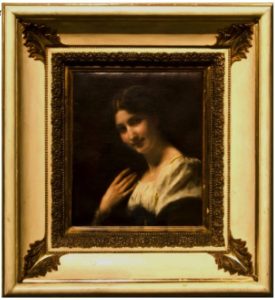Anyone born in the 1990s probably watched the animated show Avatar: The Last Airbender as it first came out starting in 2005. For this demographic, anything involving tunnels may conjure the “Secret Tunnel song” from season 2, episode 2. This was certainly the only thing I hummed as I read about a little-known heist that rocked South America in July 2002.
At the National Museum of Fine Arts in Asunción, Paraguay, staff walked in one morning to find five empty frames on the wall among their Old Masters collection. The stolen works included a Tintoretto self-portrait, a Madonna and Child by Bartolomé Estéban Murillo, a Gustave Courbet landscape, Tête de Femme by Adolphe Piot, and a painting of Saint Jerome by an unknown artist. The paintings were originally from the collection of Juan Silvano Godoi, the director of the National Library, who founded the museum in 1909.
After securing the building, investigators finally found how the thieves entered the museum. The perpetrators had used pseudonyms to rent a storefront in a building across the street from the museum, saying they wanted to open a health food store. From there, they dug a twenty-five-meter tunnel underneath the street that reached all the way to the offices of the National Archives, which shared the building with the museum. They also dug a third entrance leading to the parking lot of a nearby hotel, where they likely escaped.
In 2002, the estimated value of the stolen paintings was about $200 million. Andrea Machain, writing for BBC Mundo, called it Paraguay’s “robbery of the century,” a title it held until 2017 when a Brazilian gang stole $40 million from a cash storage facility. The museum building at the time had no cameras or night security, meaning that evidence pointing to the thieves’ identity was slim. Investigators initially suspected that the thieves were probably foreign nationals who likely stole the paintings on behalf of a single collector. However, others were skeptical of this theory, saying it was equally as likely that they sold the paintings at auction or on the black market. In Paraguay, many have not forgotten the robbery. Just this past February, Paraguay’s culture ministry sponsored a project hosting five artists at a workshop where they created their reinterpretations of the stolen paintings. These paintings will be exhibited at the National Museum starting March 22nd to commemorate twenty-two years since the robbery.

